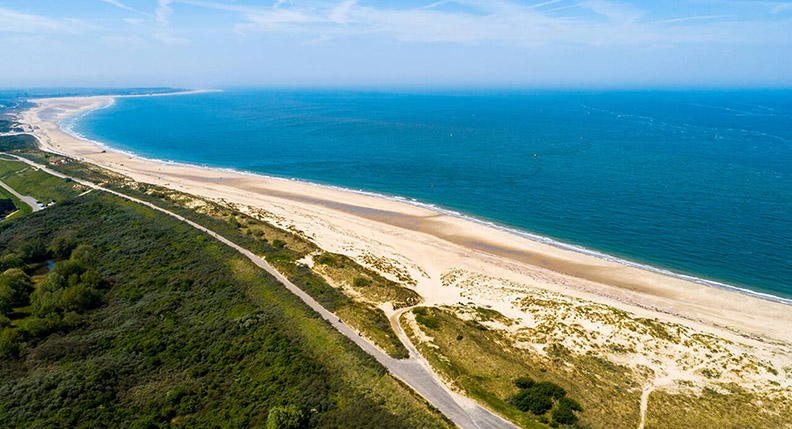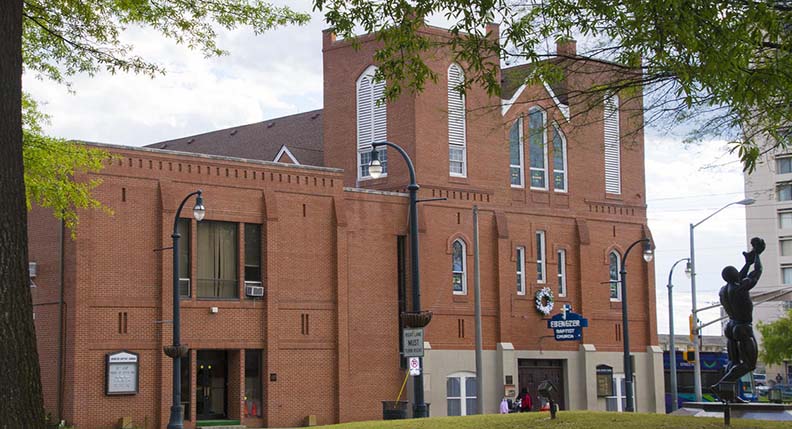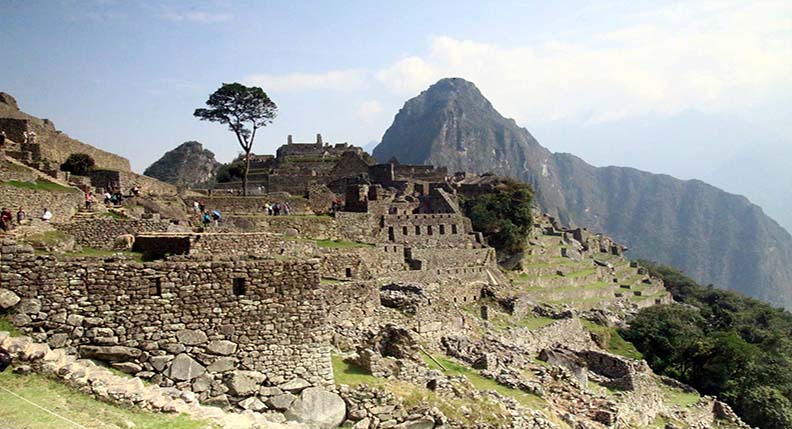The coastal charm of Middelburg, a gem nestled in the southwestern Netherlands, has a way of catching you off guard. As I step onto the cobblestone streets, the salty air hits me immediately, a reminder that the town isn’t just about history and old-world charm, but about the eternal connection between land and sea. The blend of culture and nature here is almost palpable, and there’s a rhythm to the place—one that is set by the rolling waves and the constant dance of the tides.
Middelburg, with its impressive medieval architecture and vibrant streets, seems to exist in a delicate balance with the surrounding coastal beauty. It’s a small town, but one that packs a punch when it comes to offering both an immersive historical experience and a tranquil seaside retreat. As I venture through the town, the deeper I dive into its coastal soul, the more I realize how seamlessly it integrates the past with the natural world.
1. A Stroll Through Middelburg’s Streets: Where History Meets the Sea
Middelburg’s streets speak the language of history. Every corner seems to whisper about the town’s storied past, from the impressive Abbey Tower to the cozy canals that slice through the town. There’s a laid-back atmosphere here that invites exploration, where time doesn’t seem to rush, and neither should you. The architecture, a mix of medieval, Renaissance, and Dutch Golden Age styles, sets a scene that feels timeless.
As I make my way through the market square, I can’t help but stop at the towering Abbey Tower. From the top, the view stretches out far beyond the town’s limits, and there, like a shimmering border, lies the coastline. The contrast is stark: the centuries-old stone against the expansive, ever-changing sea. It’s impossible not to feel connected to the past while also witnessing the dynamic future of the waters that have shaped Middelburg.
The historical buildings of Middelburg feel almost alive with stories, and yet, the sea remains a constant presence in the background. The town’s past is deeply intertwined with maritime history, as Middelburg was once a major hub during the Dutch Golden Age. I can almost imagine the bustling harbors, the ships coming and going, the constant flow of goods from distant lands. Today, those echoes of the past remain in the maritime museums and the town’s quiet yet undeniable connection to the sea.
2. The Beaches of Middelburg: A Symphony of Sand and Sea
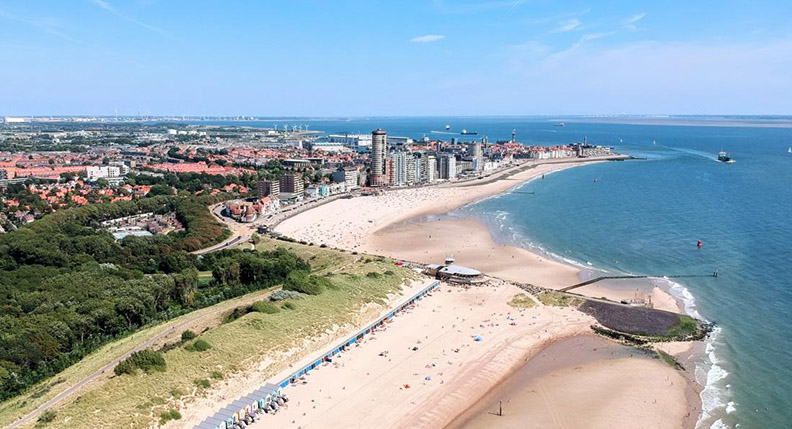
As much as the town draws me in with its history, it’s the beaches just outside the city limits that pull me further into the coastal allure. About a 10-minute drive from the town center, I find myself standing on the edge of the North Sea, where the sound of crashing waves fills the air. The beaches here are expansive, stretching out endlessly, and there’s something almost hypnotic about the rhythm of the tide, always moving, always changing.
The beach at Dishoek, just south of Middelburg, is one of those places where time seems to slow down. The long, wide stretch of sand is perfect for a walk, and the view is magnificent. There’s a feeling of peace here, as though the sea is welcoming you into its vastness. The dunes that line the beach offer a buffer between the wild waters and the human world, but still, you can’t help but be drawn to the horizon, where the sea and sky merge into one.
Walking along the shoreline, the air is thick with salt, and the sound of waves is like a constant lullaby. At low tide, the beach opens up even more, with pools of water left behind, reflecting the sky and the clouds. It’s a place where you can lose yourself in the simple beauty of nature. The beach is never overcrowded, and the calmness of the water gives it a sense of intimacy, as though it’s just you and the sea.
In the late afternoon, the sunlight changes, casting long shadows over the dunes and the beach. The golden light dances on the water’s surface, and for a moment, everything feels suspended in time. Whether it’s a quiet walk at dawn or a reflective moment at sunset, Middelburg’s beaches offer a tranquil escape from the hustle and bustle of daily life.
3. Cycling Along the Coast: A Scenic Adventure
One of the best ways to truly immerse myself in the coastal surroundings of Middelburg is by bike. The Netherlands is famous for its cycling culture, and Middelburg is no exception. Cycling along the coastline offers a unique perspective of the sea and the landscape. The trails are well-marked, and the paths wind through charming villages, past fields of wildflowers, and alongside serene stretches of beach.
The route from Middelburg to the nearby coastal village of Veere is particularly enchanting. It’s a short ride, but one that provides a glimpse into the rural beauty of Zeeland. As I pedal through the countryside, I pass by quiet waterways, marshy areas, and vast fields, all while the sea constantly hovers in the background. It’s a peaceful ride, made even more enjoyable by the sea breeze and the occasional sight of birds soaring overhead.
The highlight of this journey is reaching Veere, a small village known for its charming harbor and its well-preserved buildings. The harbor feels like a portal back in time, with the old boats gently bobbing in the water. It’s the kind of place where you can sit at a café, sip a coffee, and watch the world go by. From here, I take a moment to reflect on the fusion of land and sea, and how both seem to complement each other in Zeeland’s landscape.
4. The Tides and the Mood: Understanding the Sea’s Influence
The sea’s impact on Middelburg is ever-present, but it’s also something that changes throughout the day. The tides dictate the mood of the coastline. When the tide is high, the beach is narrow, and the waves crash against the dunes. It feels powerful, almost commanding, as if the sea is reminding you of its vastness and strength.
But when the tide recedes, the landscape shifts completely. The beach widens, revealing the wet sand and tidal pools. The water retreats, leaving behind patterns and textures that seem to tell their own story. It’s as though the sea, which can feel so overpowering, is also giving the land space to breathe, to rest, to exist on its own terms.
This ebb and flow of the sea is a reminder of the delicate balance that exists between nature and civilization in Middelburg. The people here understand the rhythms of the tides and the sea, and that knowledge shapes everything—from the way the town is built to the way people approach life here. The sea is both a giver and a taker, and there’s a respect for its power, its unpredictability, and its role in shaping the world around them.
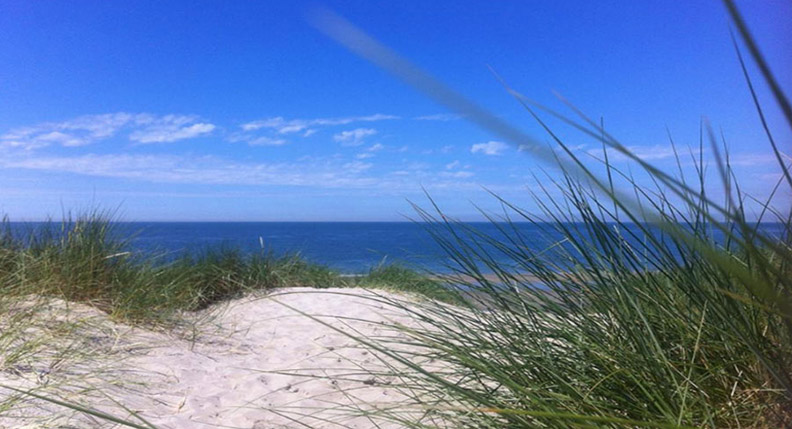
5. The Culinary Delights: Taste of the Sea
Exploring the coast of Middelburg also means indulging in the local cuisine, and it’s impossible to visit without sampling the fresh seafood. Zeeland is known for its oysters, mussels, and fish, all of which are sourced from the North Sea.
I decide to stop at one of the small restaurants near the beach in Dishoek, where the menu is full of dishes that showcase the best of what the sea has to offer. The catch of the day is a plate of fresh mackerel, grilled to perfection and served with a side of roasted vegetables. The fish is tender and flavorful, the taste of the sea still lingering in every bite. It’s the kind of meal that connects you even more deeply to the place, as if the flavors are a reflection of the land and the water that surrounds it.
For dessert, I try a local treat called “zeeuwse bolus,” a sweet, sticky pastry that’s beloved in Zeeland. It’s the perfect end to a day spent exploring the coastline—comforting, indulgent, and utterly satisfying.
6. The Unseen Magic of Middelburg’s Coastline
As the evening settles in, the sun dips below the horizon, casting a soft pink glow across the water. The beach, once bustling with visitors, is now quiet, save for the occasional sound of seagulls in the distance. The moonlight reflects off the sea, giving it an ethereal quality. The landscape is forever changing—always shifting, always moving—much like the relationship between the people and the sea in Middelburg.
There’s something magical about the way the town and the coastline exist in such harmony. It’s a place where history and nature collide, creating a space that feels both ancient and alive. The ever-present sea is both a witness to the past and an active participant in the present, shaping not just the land but the culture, the food, and the people who call this place home. And as I sit on the beach, listening to the waves gently lapping against the shore, I know that this connection between Middelburg and the sea is something that will stay with me long after I leave.
